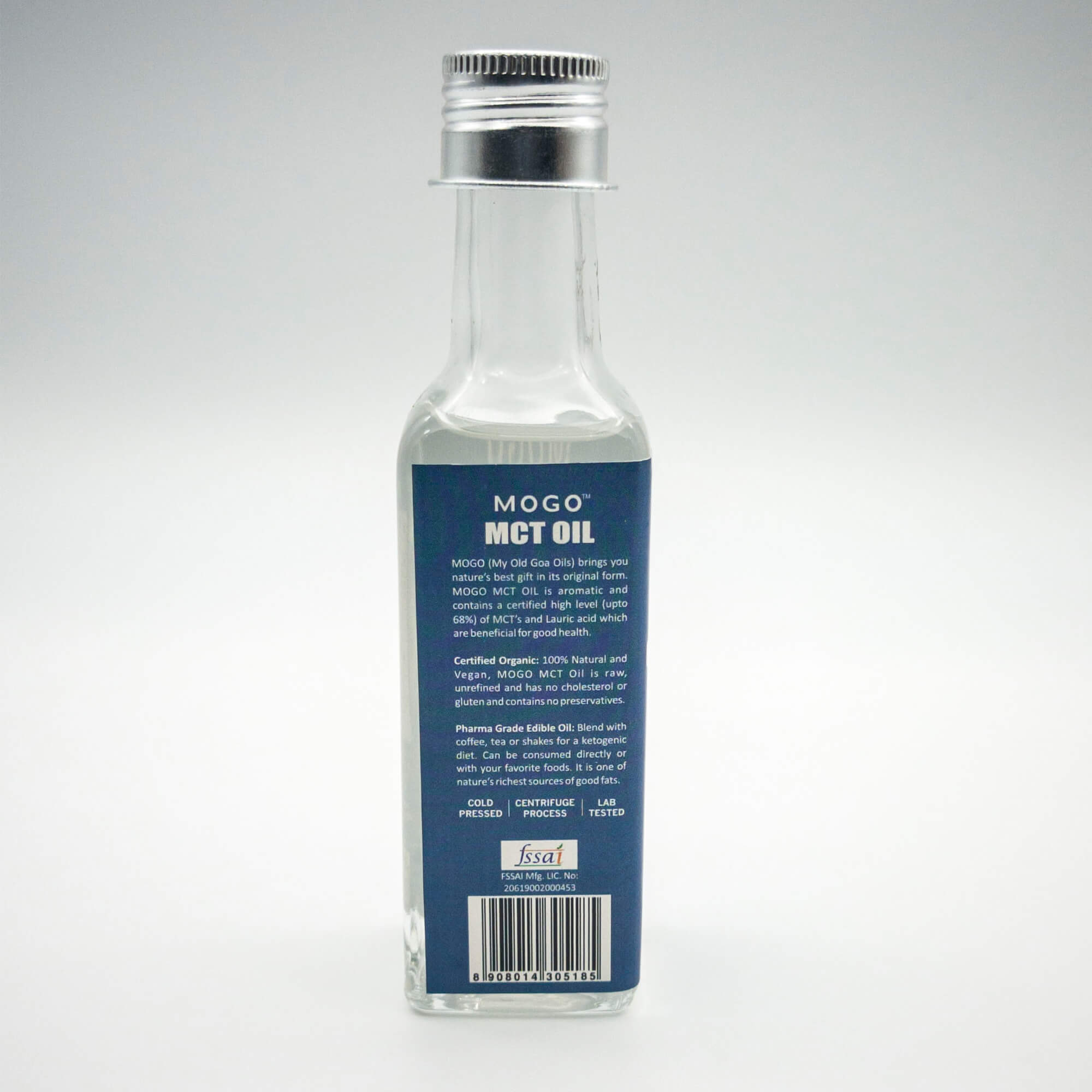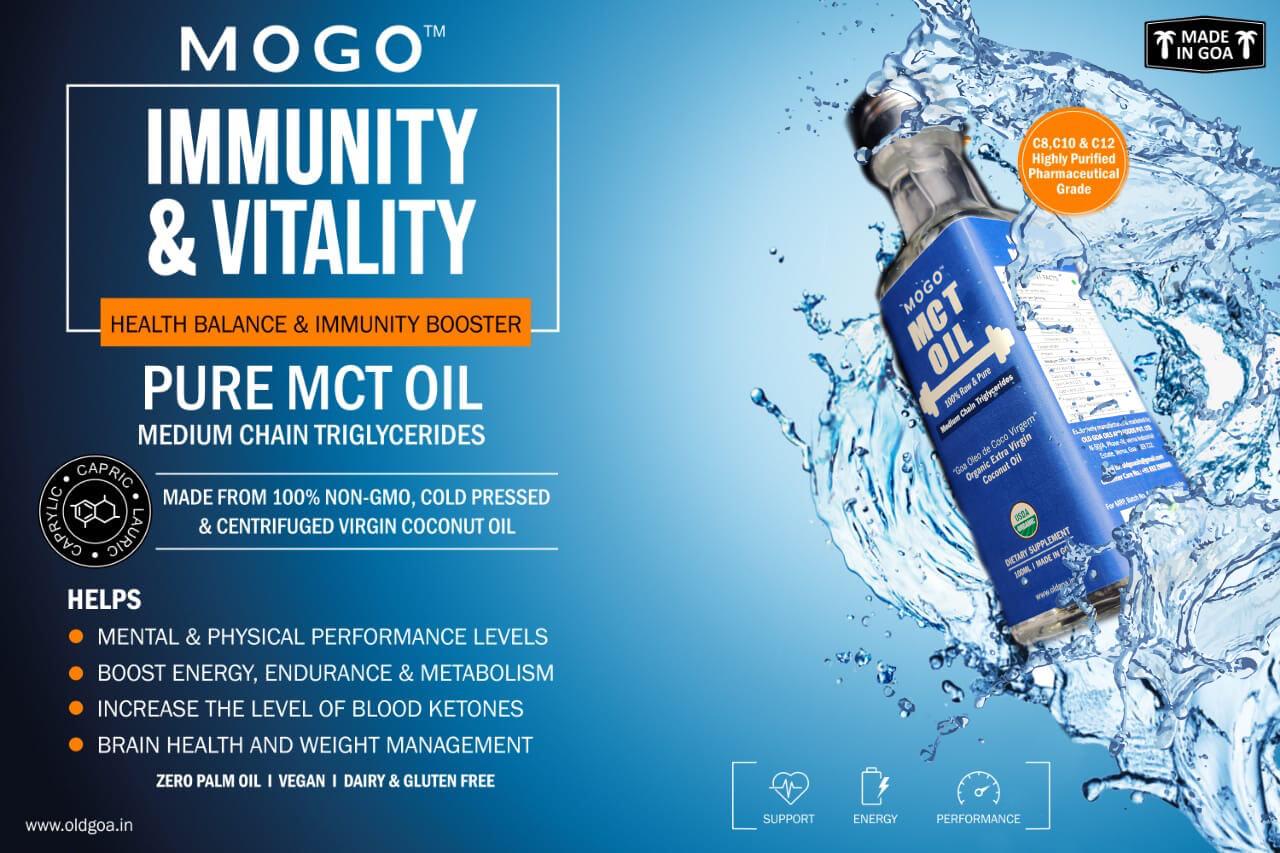MOGO MCT oil contains only medium chain triglycerides and no long chain fatty acids. Our cold pressed extraction process produces a certified high percentage of C8 (caprylic acid) and C10 (capric acid) MCT’s. Consuming MCT oil is proven to increase energy as it provides direct fuel for your brain and body and also increases fat burn. This happens as the oil bypasses normal fat digestion and heads straight to the liver where it is quickly metabolized by the body and converted into energy. This energy source is know as keytones.
MCT oil is popular among those following a keto diet, which is very low in carbs, moderate in protein, and high in fats. The high intake of fat and low intake of carbs puts your body in a state of nutritional ketosis, in which it burns fat instead of glucose for fuel. Compared with coconut oil, MCT oil is better for ketone production and maintaining ketosis. Fatty acids that promote the formation of ketones are called ketogenic. One study in humans found that caprylic acid was three times more ketogenic than capric acid, and about six times more ketogenic than lauric acid. Several studies have also shown that MCT oil may aid fat loss by boosting metabolism and promoting greater feelings of fullness compared with coconut oil and LCTs.
There are the four MCTs that are naturally found in food:
Caproic Acid (C6)
Caprylic Acid (C8
Capric Acid (C10)
Lauric Acid (C12)
Caproic Acid (C6)
MCT oil supplements that taste a bit off or create a tingle in our throat typically have too much caproic acid (C6) in them.
While it doesn’t taste good at all, there’s usually not enough of it in coconut oil or MCT oil to experience it in full effect. The upside of caproic acid is that it is absorbed and converted into ketones more quickly than any other MCT.
Caprylic Acid (C8)
Caprylic acid makes up 12% of the MCTs found in coconut oil. This MCT is known to have strong anti-microbial properties that help maintain gut health.
As you search for MCT oil supplements, you will find that caprylic acid is typically the most prevalent MCT in them. The higher the C8 content, the more quickly that supplement will raise your ketone levels.
Capric Acid (C10)
This MCT makes up 10% of MCTs in coconut oil. Like caprylic acid and caproic acid, capric acid turns into ketones quickly in the liver. However, due to its two extra carbons, capric acid is processed a bit slower than C8 and C6.
Lauric Acid (C12)
Lauric acid is the main reason why coconut oil is typically used as an MCT supplement. This is because it makes up roughly half of the fats found in coconut oil.
Ways to use MCT oil in food
Blend it. Regular MCT oil needs to be blended into beverages in a high-speed blender or electric whisk. Otherwise, MCT oil will float right to the top of your drink.
Drizzle it. Adding small amounts of MCTs to any food will add some healthy fats, plus make the flavors pop! Read on for even more innovative ways to add these healthy fats to your diet.
Replace other oils with it. Do you have a recipe that calls for canola oil, vegetable oil, avocado oil, coconut oil, or olive oil? Substitute with MCT oil. MCT Oil can be used for low to mid temperature cooking. The smoke point of MCT oil is 320°F, which is lower than it’s cousin coconut oil, who’s smoke point is 350°F.






